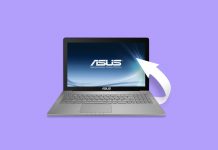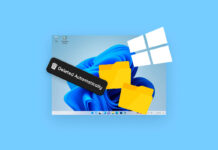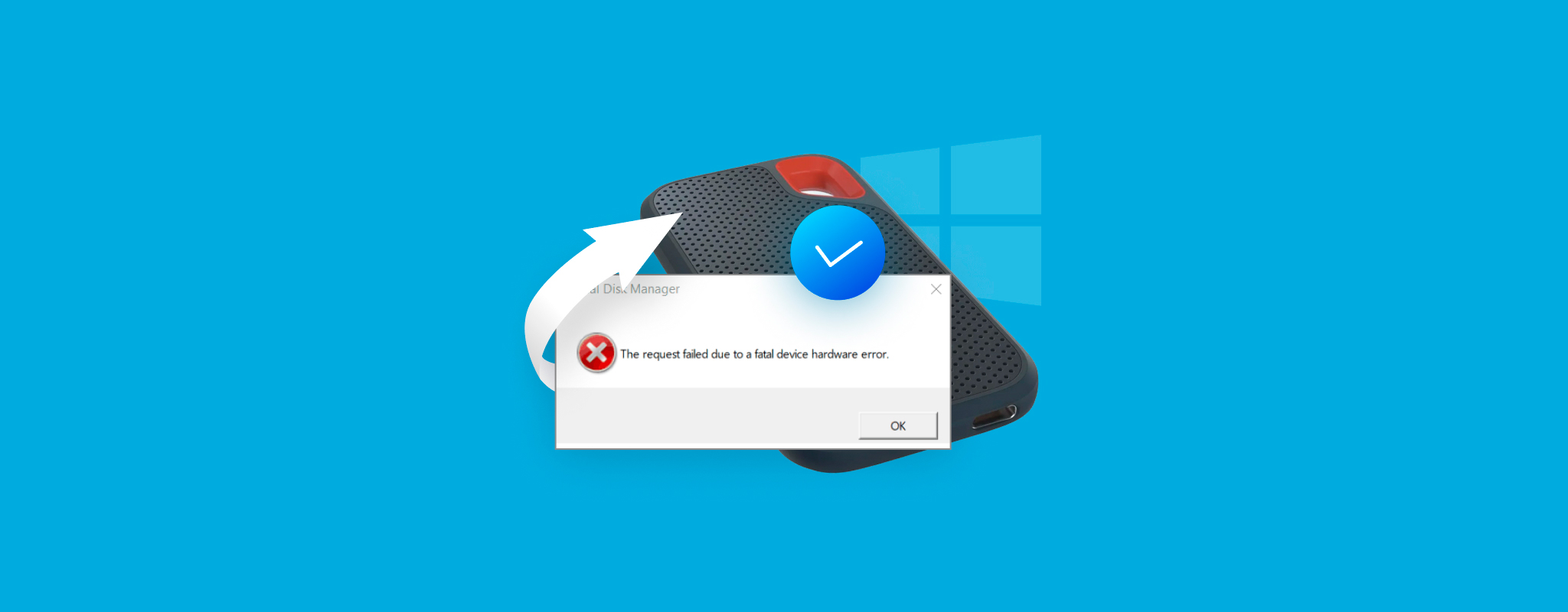 Was your regular Windows experience interrupted by an error message reading “Request failed due to a fatal device hardware error”? Obviously, this error is quite alarming when it first appears, as you’ll find that you cannot access any of the files on the problematic disk.
Was your regular Windows experience interrupted by an error message reading “Request failed due to a fatal device hardware error”? Obviously, this error is quite alarming when it first appears, as you’ll find that you cannot access any of the files on the problematic disk.
Don’t worry, as there are many proven solutions available to fix this exact issue. Read on to learn more about the fatal device hardware error and how to fix it.
What Does Fatal Device Hardware Error Mean
What is a fatal device hardware error? Well, the error message is quite general and only aims to inform you that something has gone wrong with a physical hardware device, typically an HDD or SSD, that’s preventing data from being read or written. It may be displayed alongside the error code 0x800701E3. To understand the problem further, you’ll have to figure out what caused the message to appear.
Here are some common problems that cause this error message to appear:
| Problem | Description |
| 🔗 Faulty or loose connection | A faulty or loose connection will prevent your OS from performing basic tasks like read/write actions. This can be caused by faulty cables, damaged connectors, or blocked ports. |
| ❌ Bad sectors | When a sector goes bad, the data on it will be lost if it doesn’t have enough time to transfer to a spare healthy sector. If the sector contains your partition table, it can cause this error. |
| 👎 Corruption or improper mapping | When a drive becomes corrupted, it’s possible for this error code to appear whenever you try to access it. It can also appear if you’ve incorrectly mapped a drive. |
| 💥 Physical damage | Physical damage is the hardest to recover from. If a physical component in the drive has broken, you will need to rely on a data recovery service to get your data back. |
Although rare, this problem can also occur due to an incompatible SATA or M.2 to USB adapter, as seen with this user.
If one of the above problems occurs, you may receive a “The request failed due to a fatal device hardware error.” error message in response. But, what does this fatal device hardware error mean for your data? If the problem persists, your data will be in a vulnerable state, and the drive may worsen to a point where your data becomes unrecoverable. That’s why we recommend data recovery first.
Extract the Data to Avoid Data Loss During Fixes
If you’re unable to access your data due to the fatal device hardware error message, then you should recover the data from your drive immediately.
Data recovery is an important part of the process that may be your only chance of salvaging the data, as the fixes we’ve included have a chance of rendering your data unrecoverable.
The recovery process will be different depending on whether or not the drive is visible in Disk Management.
Case 1: Drive is Visible in Disk Management
If your drive is visible in Disk Management and reading the correct size, you can use data recovery software to get the data on the drive back. In this case, we recommend using Disk Drill, as it specializes in bypassing such error messages and recovering your data to a healthy drive. Better yet, its all-in-one scanner does a great job of recovering as much of your lost data as possible, as well as existing files if you want to recover those.
We encourage you to make a byte-to-byte copy of your drive in its current state to preserve the original data.
Follow these steps to recover data from the drive using Disk Drill:
- Download and install Disk Drill.
- Select the drive from the list of devices, then click Search for lost data.
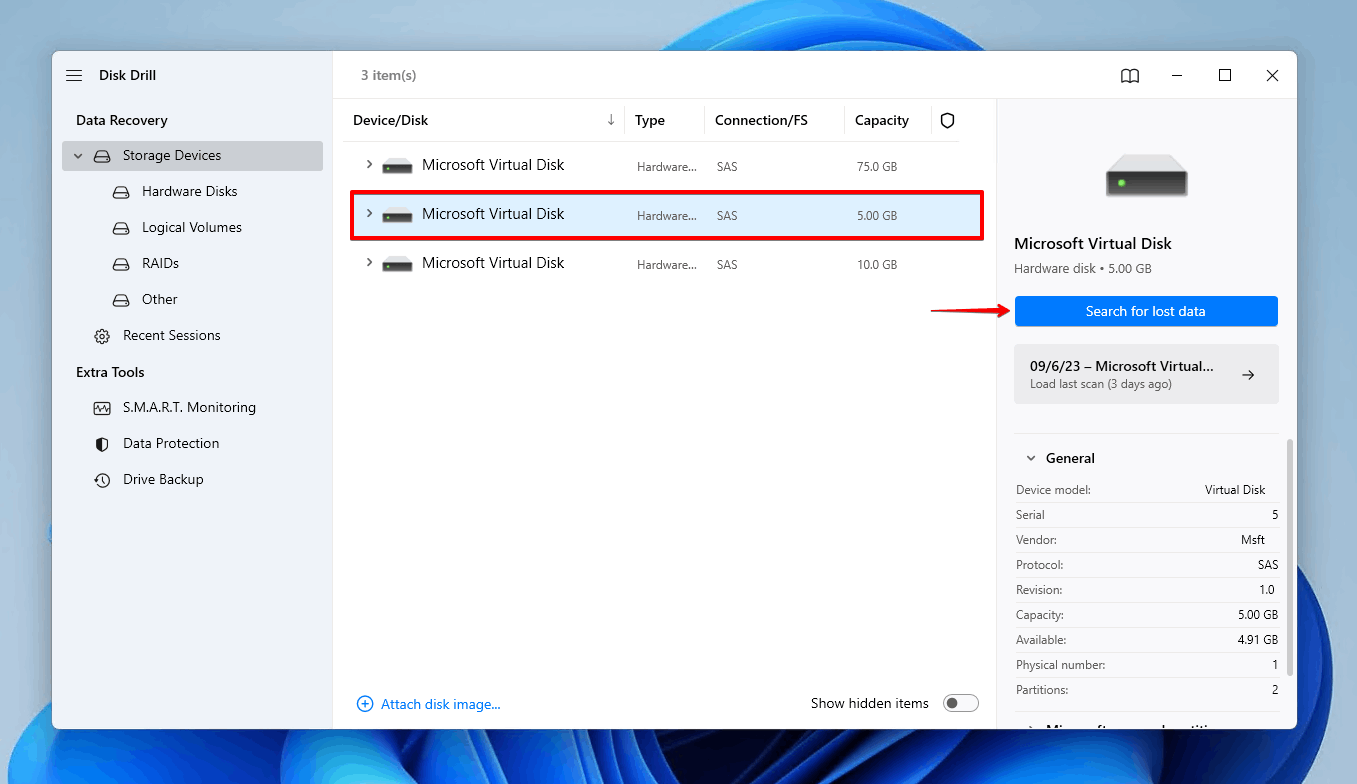
- Click Review found items once the scan is complete. Alternatively, clicking one of the colored file-type icons will filter the results according to the selected file format.
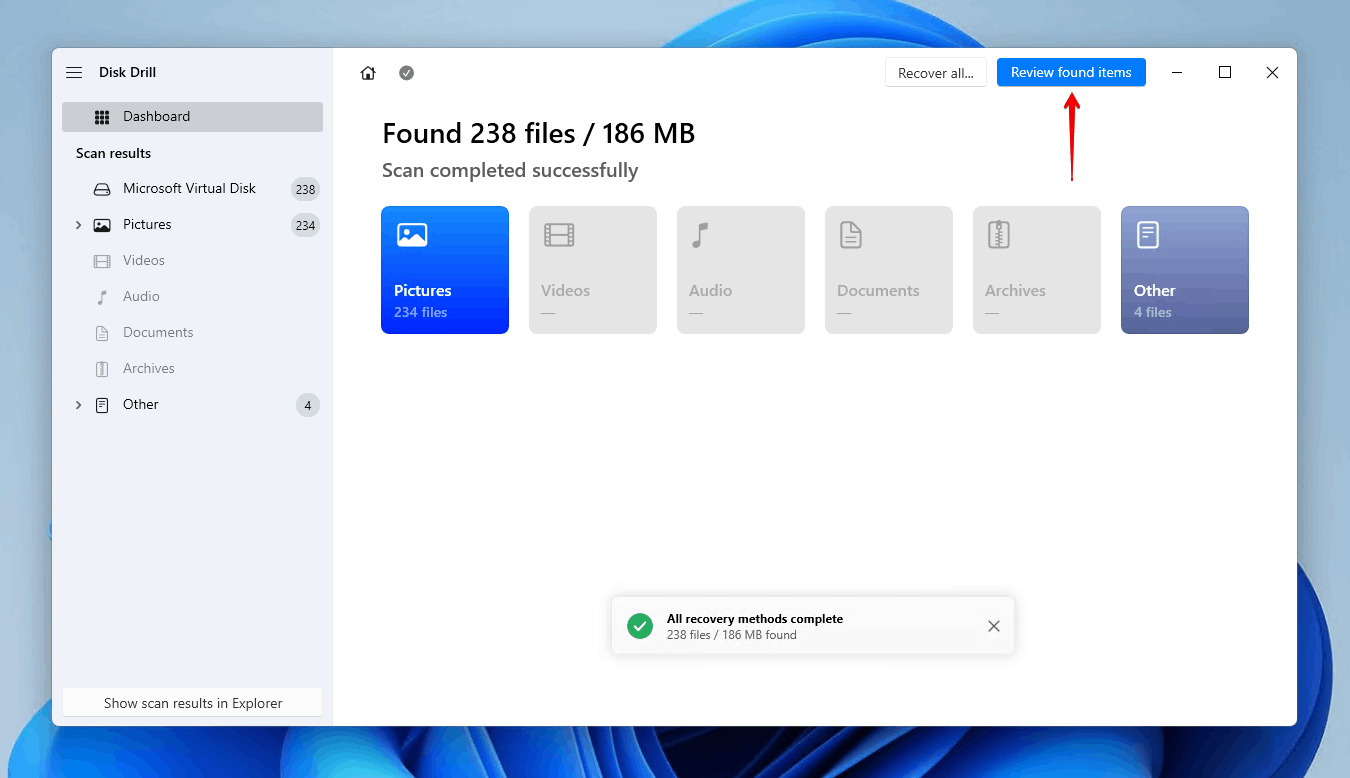
- Select the files you want to recover. Existing data will be in the Existing section, and deleted data may be split between the Deleted or lost and Reconstructed sections based on how they were recovered. Once you’ve selected all the files you wish to recover, click Recover.
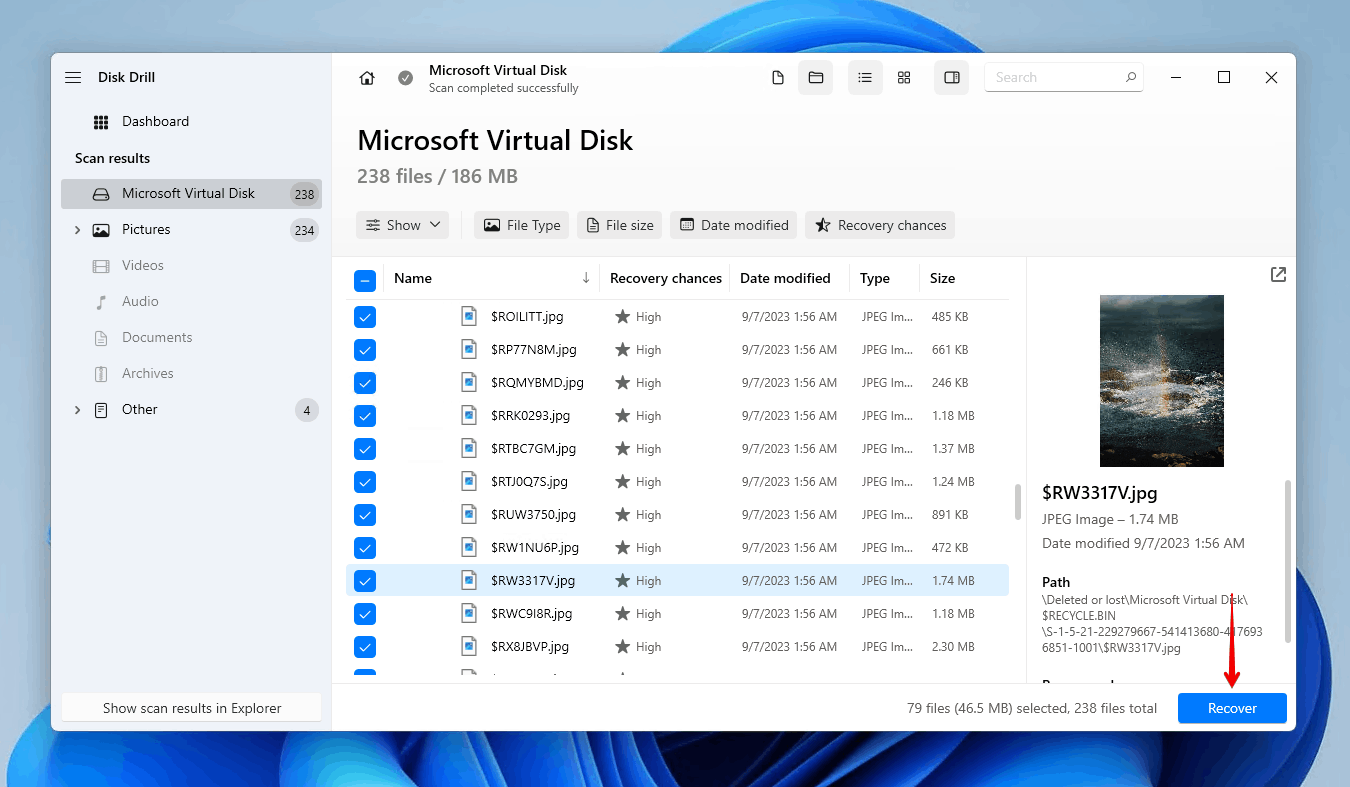
- Choose a safe location to recover the files on a separate storage device. Click Next to finish data recovery.
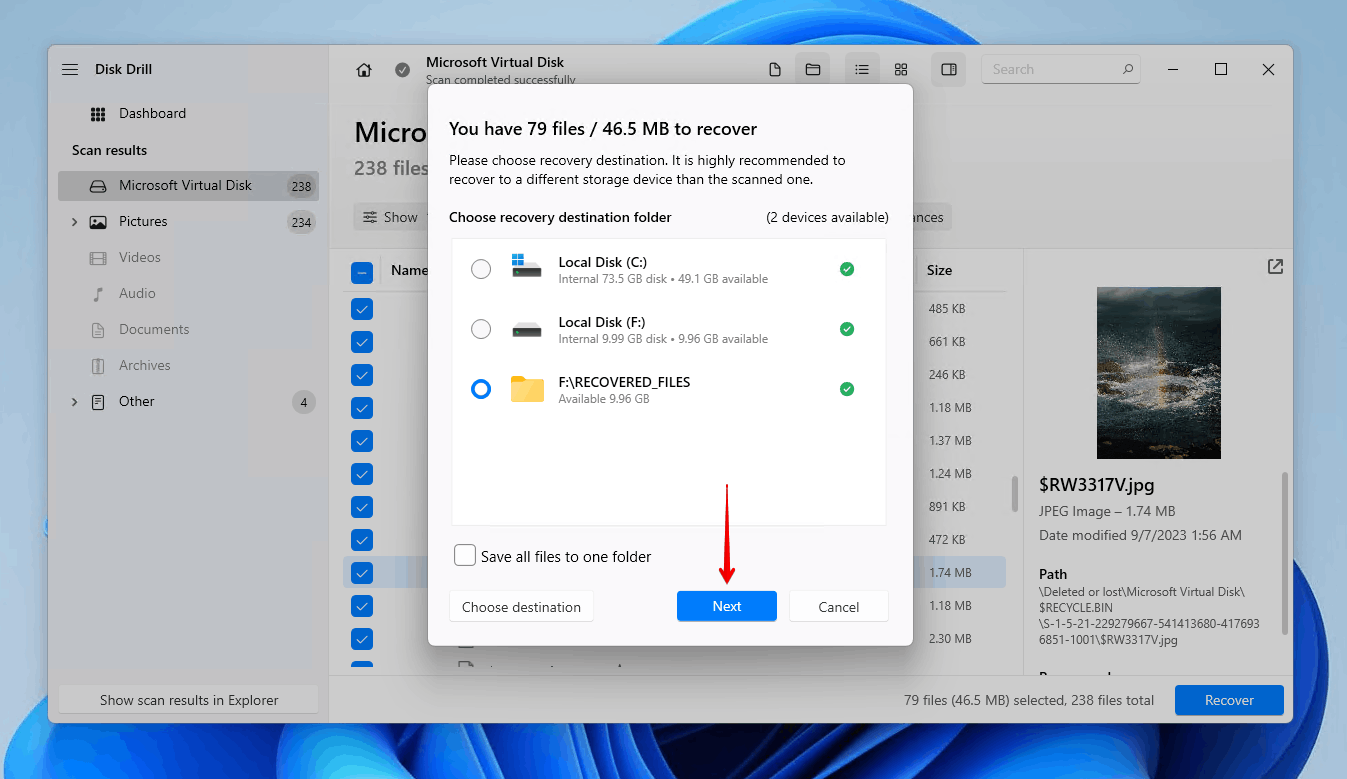
Case 2: Drive is Invisible in Disk Management
If the disk isn’t visible in Disk Management, be sure to check all cables connected to the drive are firmly secured. If they are, and the drive still isn’t appearing, it points to a much worse problem. The same is true if the drive appears with the incorrect storage capacity, or you hear loud clicking/screeching noises coming from the drive. In any of these cases, you should disconnect the drive immediately and use a data recovery service to recover the data.
How to Fix Fatal Device Hardware Error
Once you know your data is safe, you can move on to troubleshooting and fixing the drive. We’ve included a few proven methods that have been useful in fixing the “Request failed due to a fatal device hardware error” message in the past.
Method 1: Check Connections Again
If the drive is appearing in Disk Management, but only intermittently, then it indicates that there is something wrong with the physical connection. For example, if the device hardware error appeared on a WD Passport external hard drive, it could be a faulty cable, loose connector, or port blocked by dust or lint. In these cases, the other mentioned solutions that explain how to fix a Passport fatal device hardware error will be irrelevant.
Here are some simple checks you can make to ensure it’s not a bad connection:
- Double-check the connection at both ends of the cable
- Make sure the port is free of debris
- Try another cable
- Try another computer
Method 2: Change the Drive Letter
If the drive hasn’t been assigned a drive letter, or there is something wrong with the assigned drive letter, Windows will not let you access the data on it. When you try to access the drive, Windows may show this error message in response. This can be fixed relatively easily by either adding a drive letter or changing the existing one.
Here’s how to adjust the drive letter using Disk Management:
- Right-click Start and click Disk Management.
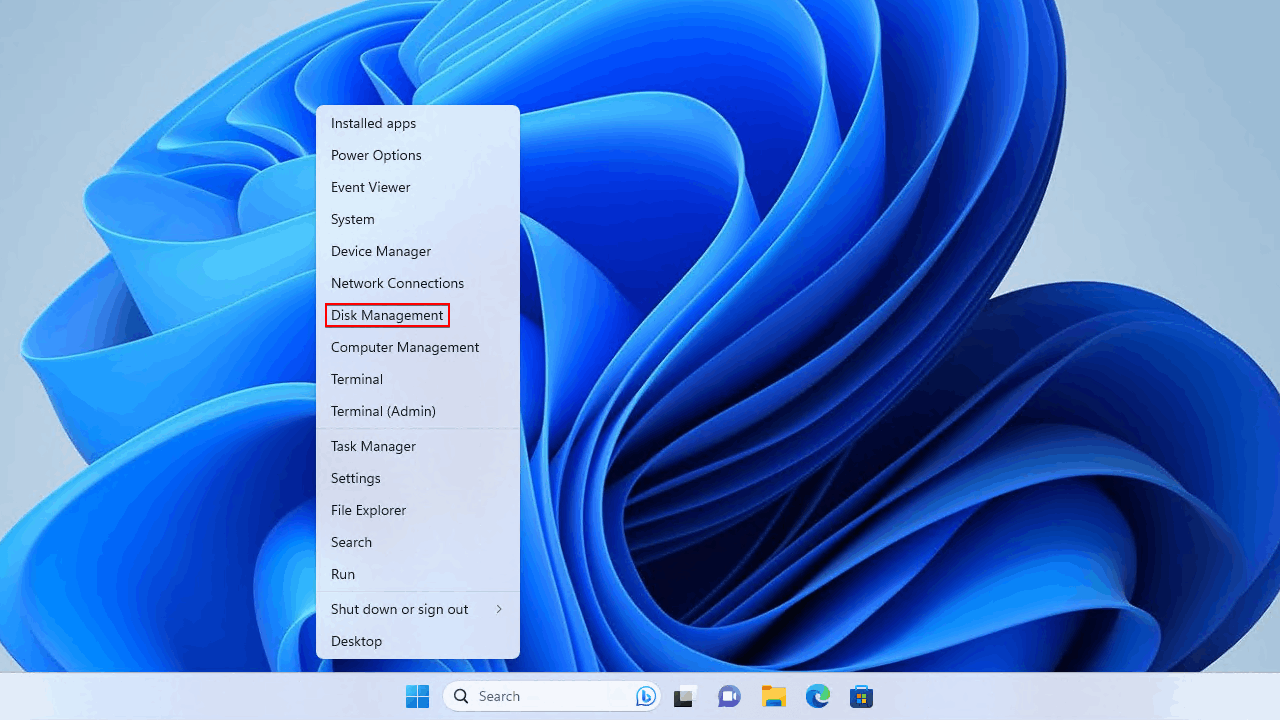
- Right-click the volume of the drive, then click Change Drive Letter and Paths.
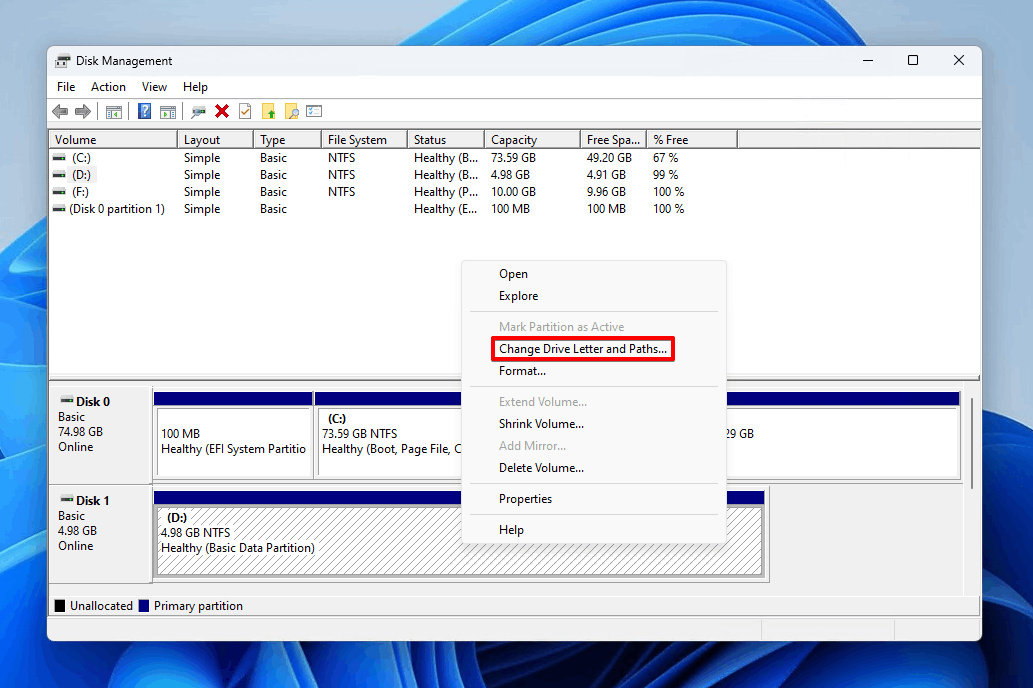
- Click Change. Or, if you don’t have a drive letter, click Add.
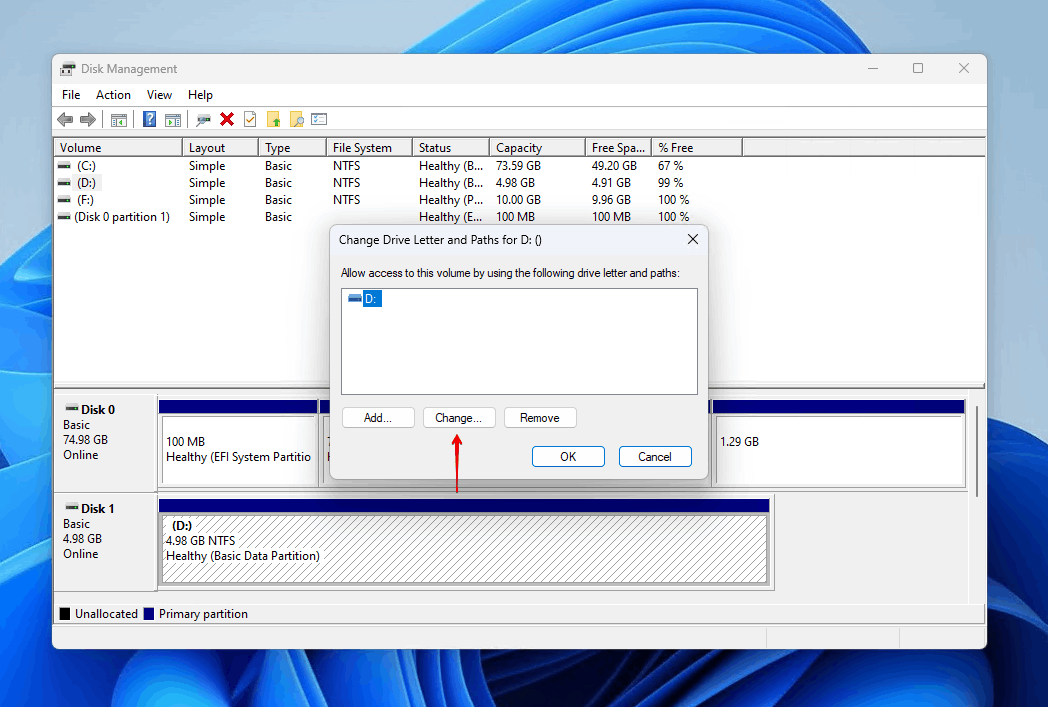
- Select a drive letter, then click OK.
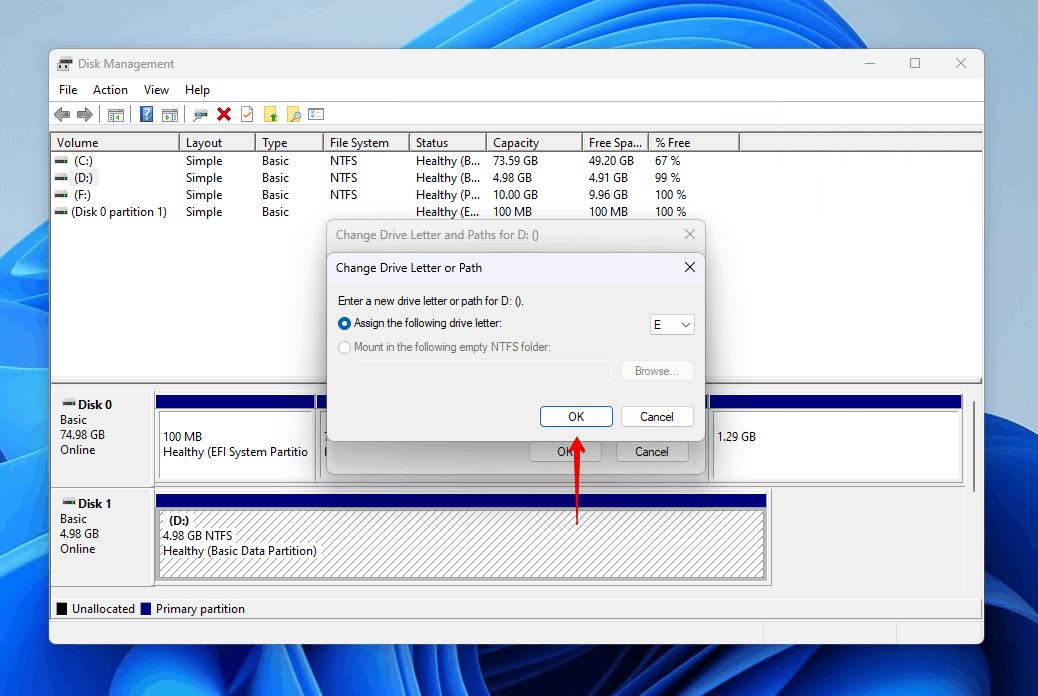
- Click OK again.
Method 3: Run CHKDSK and Error Checking Tool
CHKDSK is a file system repair tool that’s designed to find problems and fix them to restore the drive. The Error Checking Tool does the same thing using CHKDSK, except it has a user interface so it’s a little bit easier.
We’re going to show you how to use both.
CHKDSK
- Right-click Start and click Terminal (Admin).
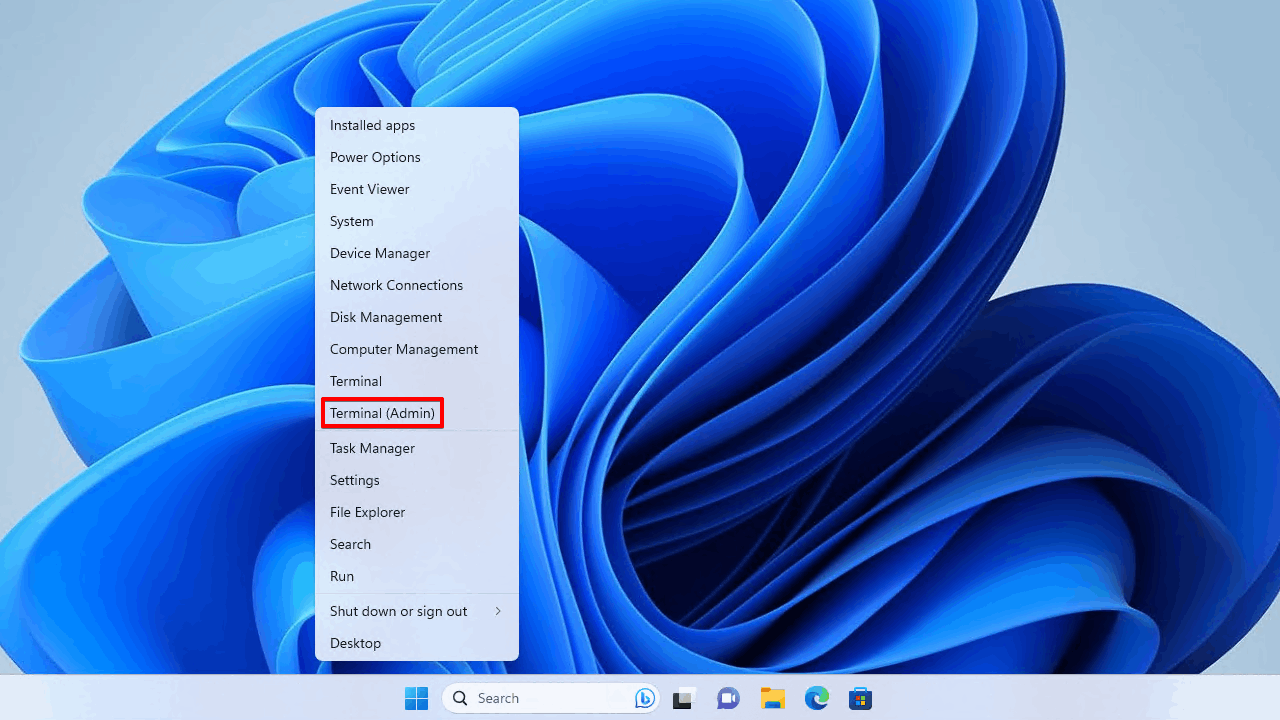
- Type
chkdsk *: /r. Replace * with the drive letter of your drive. Press Enter.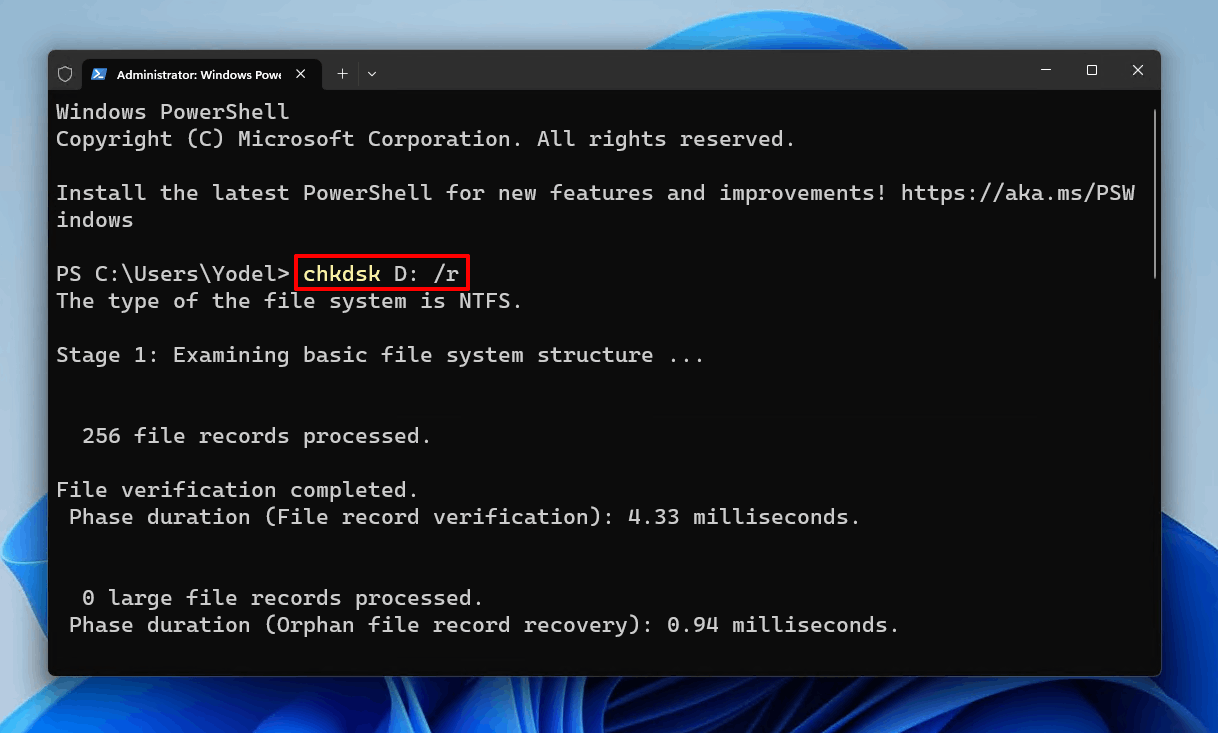
Error Checking Tool
- Open File Explorer.
- Right-click the drive and click Properties.
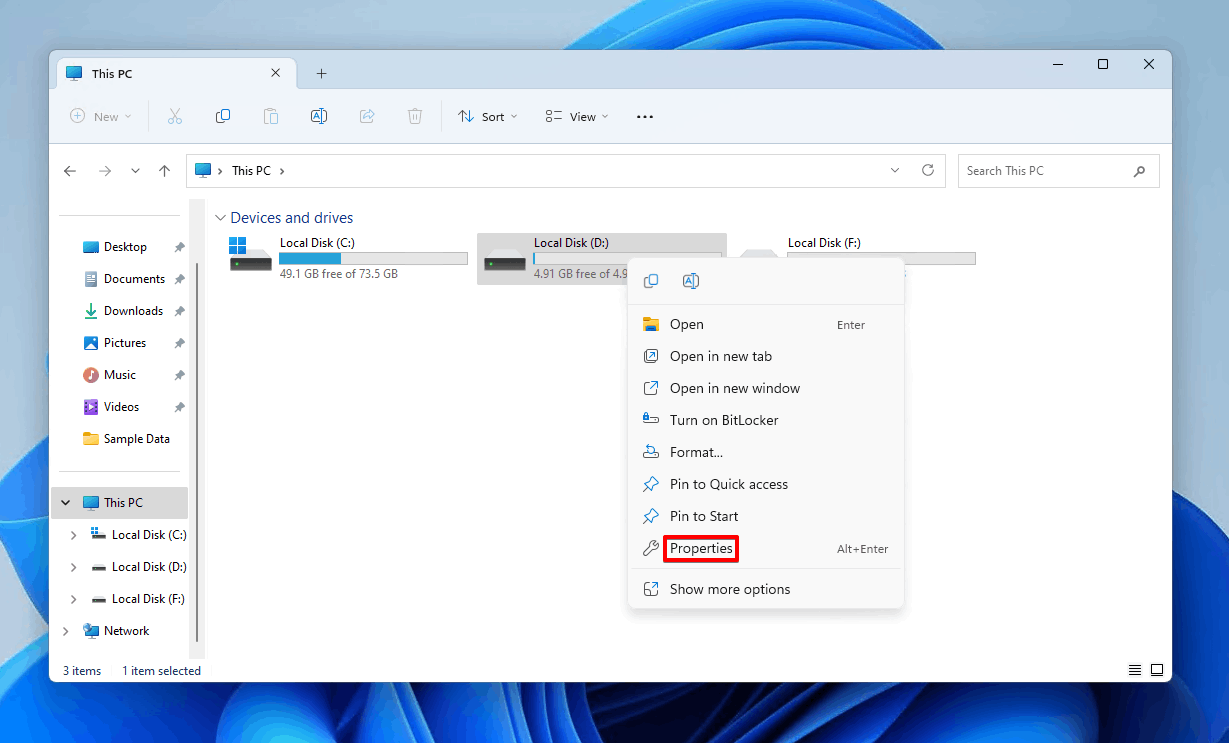
- Click Tools, then Check.
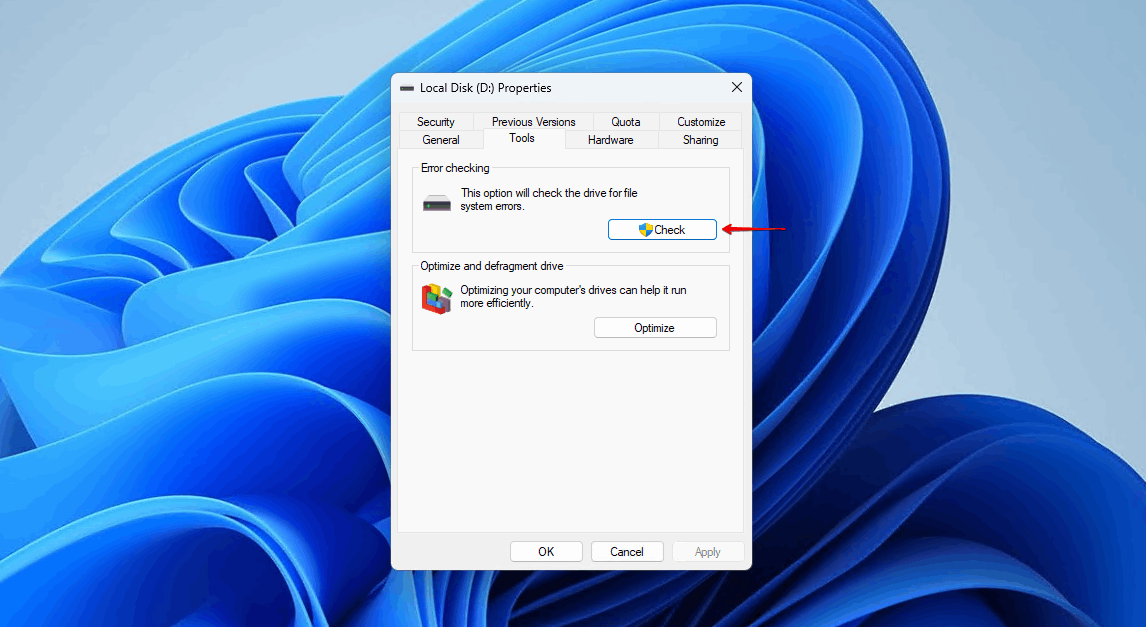
- Click Scan drive.
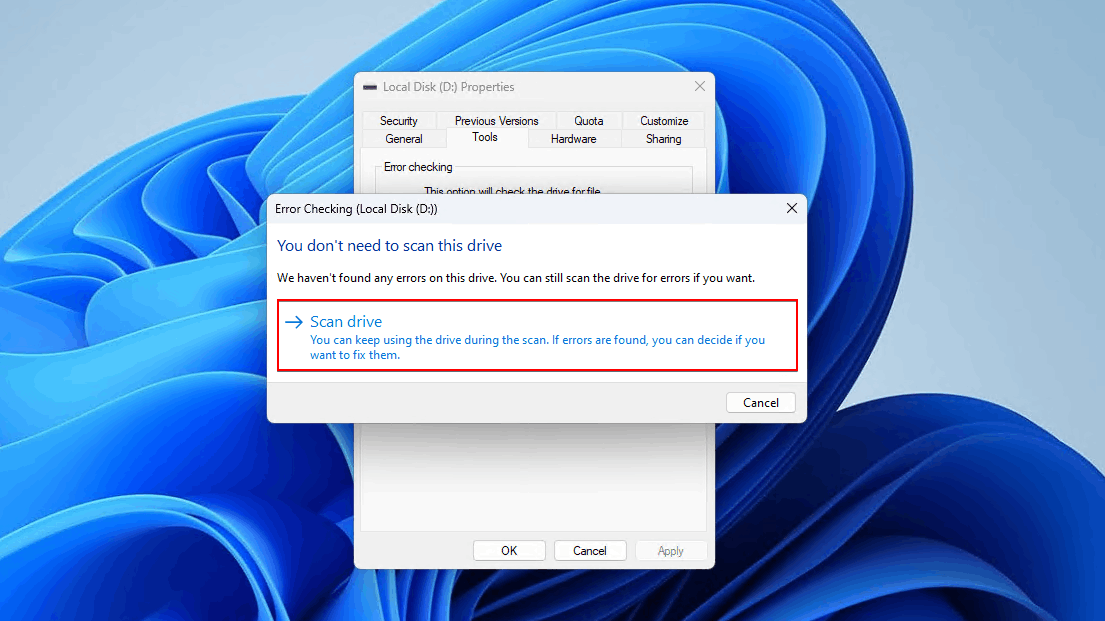
Method 4: Format Your Drive
If none of the previous methods have worked so far, you can also rely on an old-fashioned format. For example, if your Seagate drive encounters a fatal device hardware error, performing a quick format will delete everything on the drive and reset it back to a blank state.
Since formatting will delete everything on your drive, it’s highly recommended that you either create a backup image of the drive or recover the data before proceeding.
Here is a brief guide on formatting a drive:
- Right-click Start and click Disk Management.

- Right-click the volume on the drive and click Format.
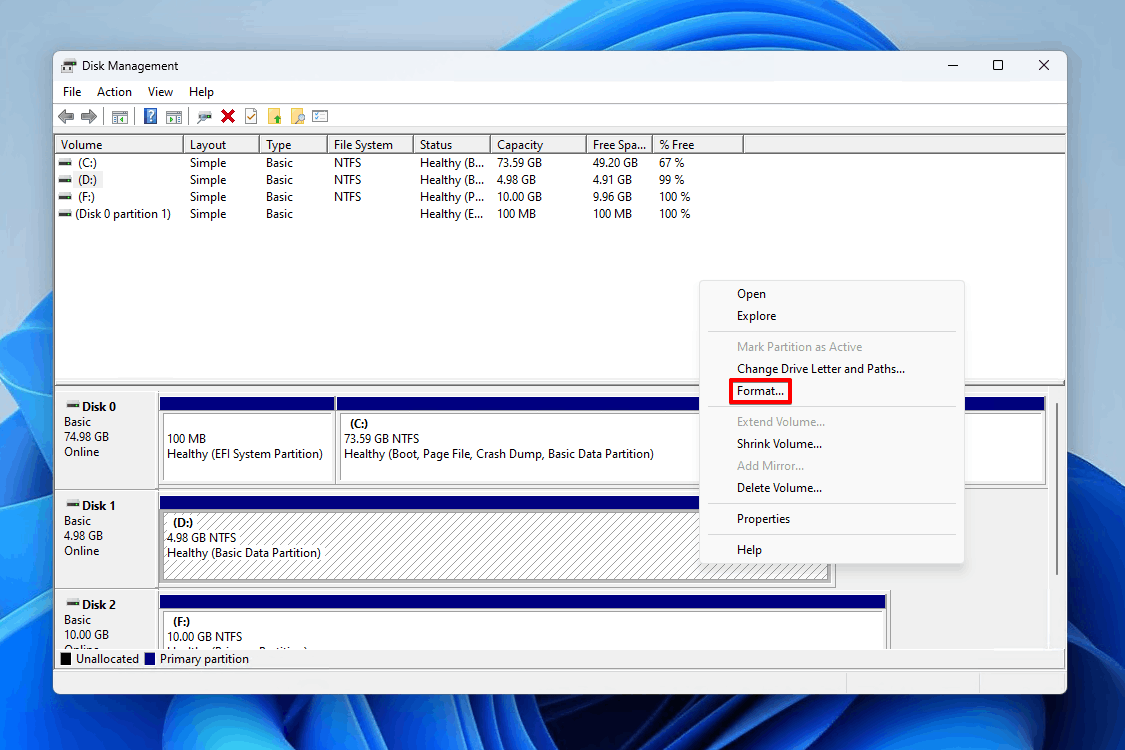
- Provide a volume label and choose a file system. Make sure Perform a quick format is ticked, then click OK.
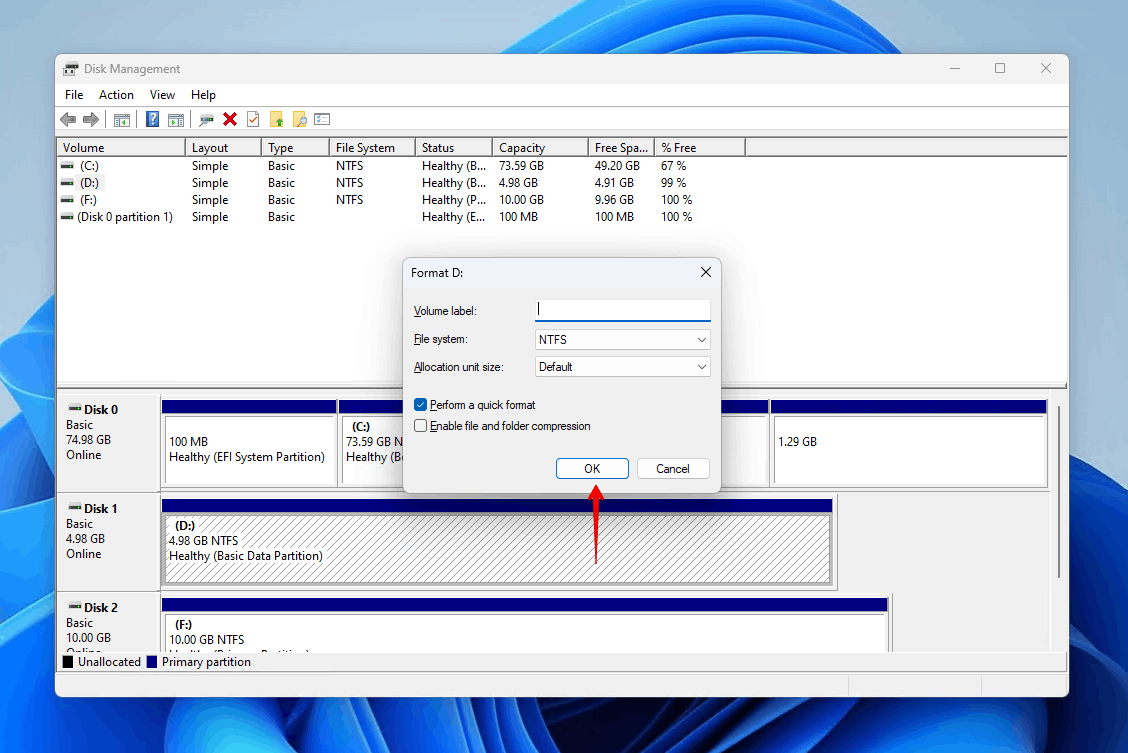
- Click OK again.
Method 5: Initialize the Drive
After the error message occurred, you may find that your drive has become uninitialized when you check it in Disk Management. To get it back up and running, you will need to initialize and format it with a working file system. Bear in mind that initializing a disk will erase any data on it, so backing up or recovering the data is essential if you want to keep it.
Follow these steps to initialize a drive in Disk Management:
- Right-click Start and click Disk Management.

- Right-click the disk and click Initialize Disk.
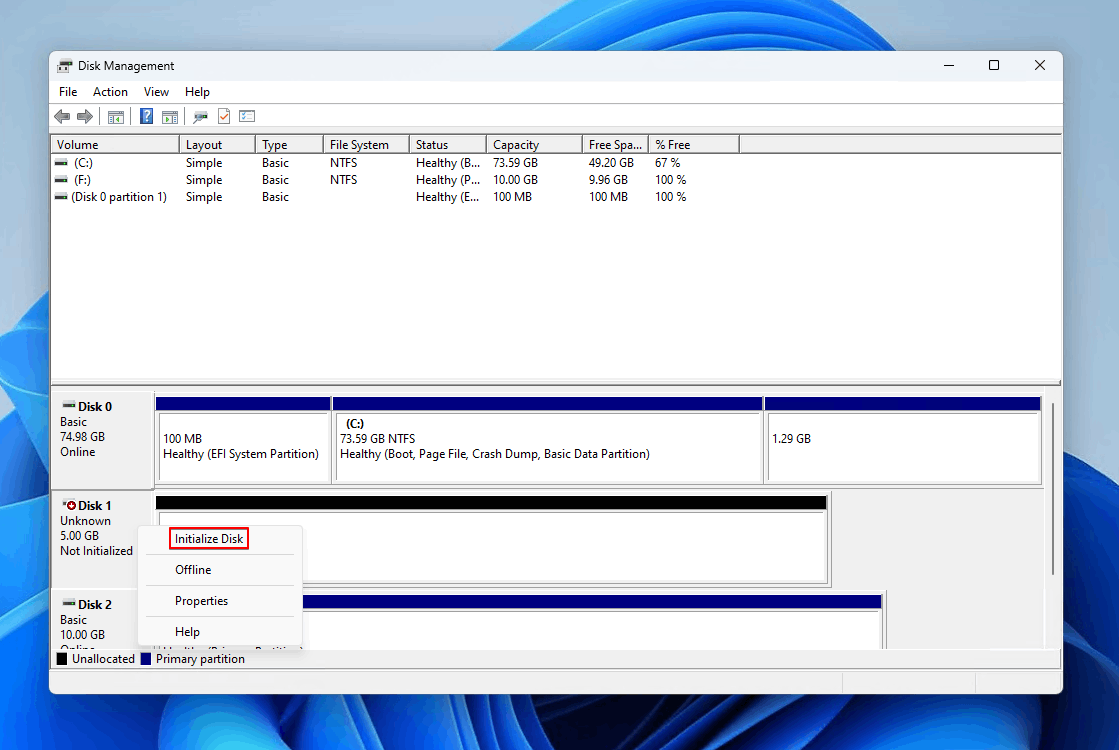
- Choose partition style, then click OK.
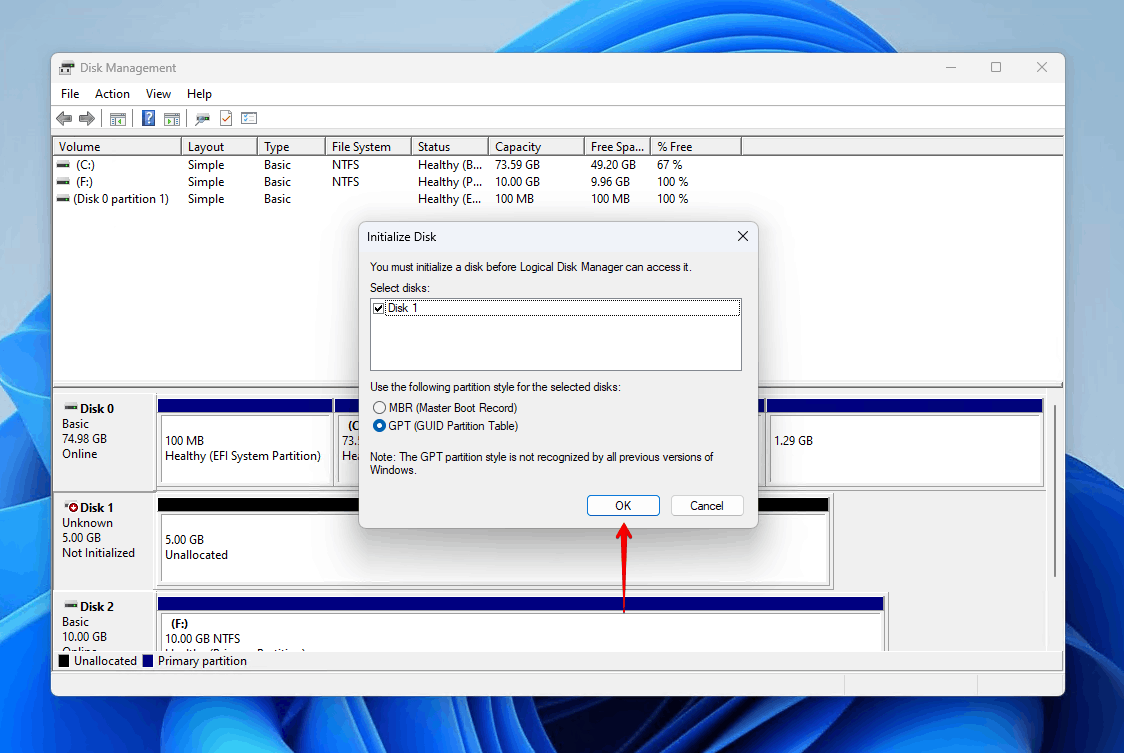
- Follow the steps in the previous section to format the drive.
Conclusion
The error message “Request failed due to a fatal device hardware error” will appear when Windows is unable to perform read/write actions on the drive or partition. It can be caused by a number of problems, but some common causes are faulty or loose connections, bad sectors, drive corruption and physical damage.
Upon receiving this error, you should immediately back up the drive and recover the data. If the drive isn’t appearing (even in BIOS), you should immediately consult a data recovery service. If the drive appears and shows the right capacity, you can repair it by checking the connections, changing the drive letter, running CHKDSK, formatting it, or reinitializing it.

